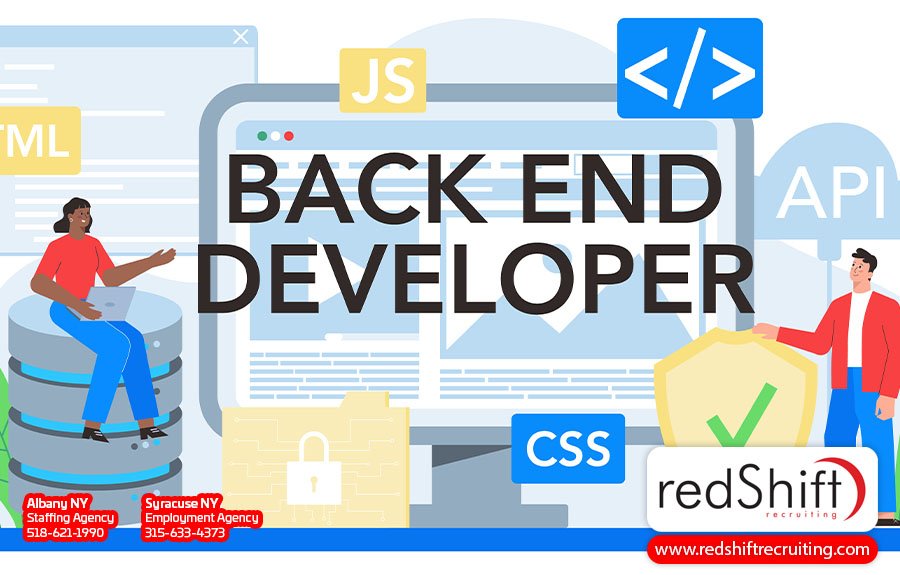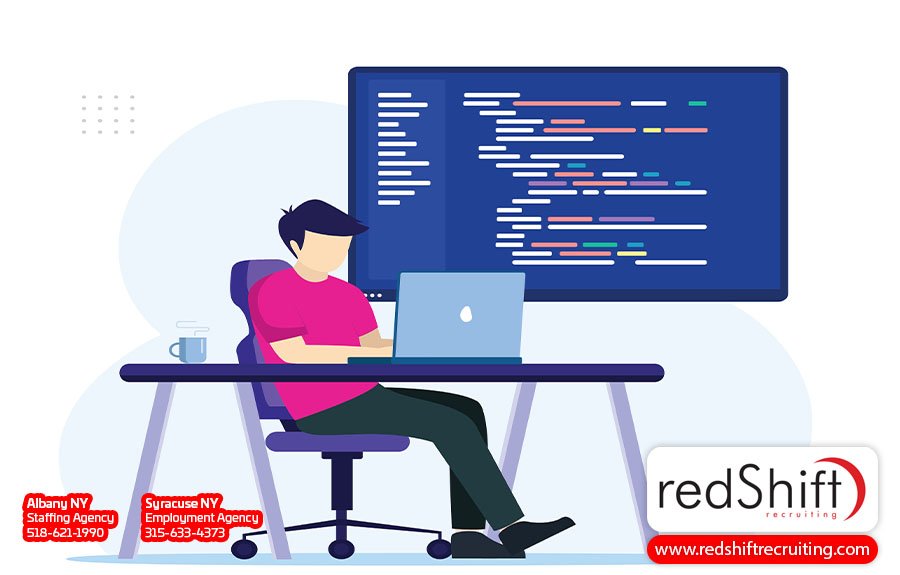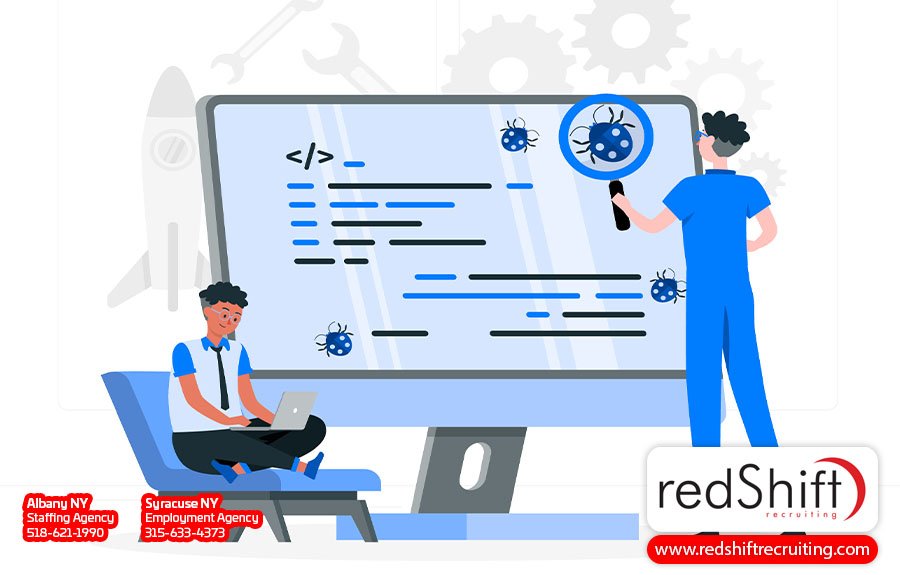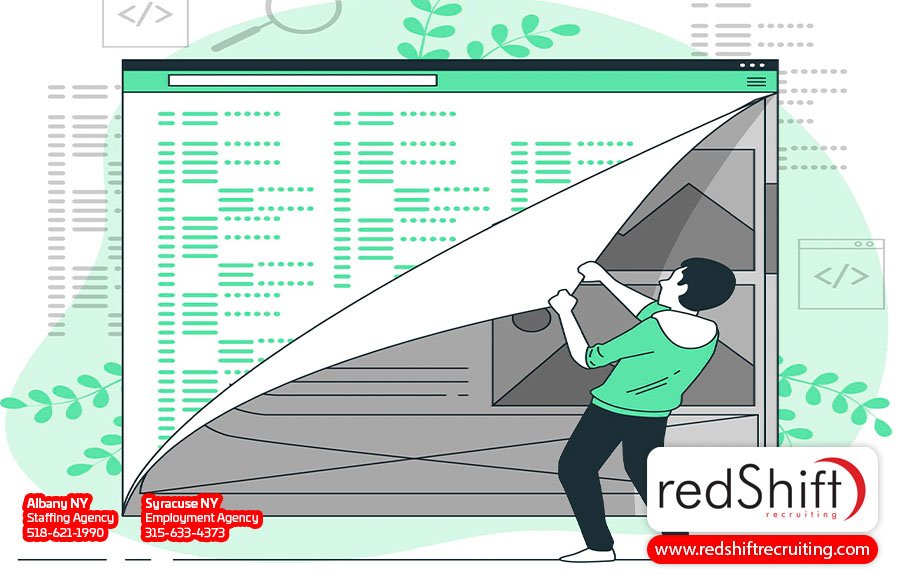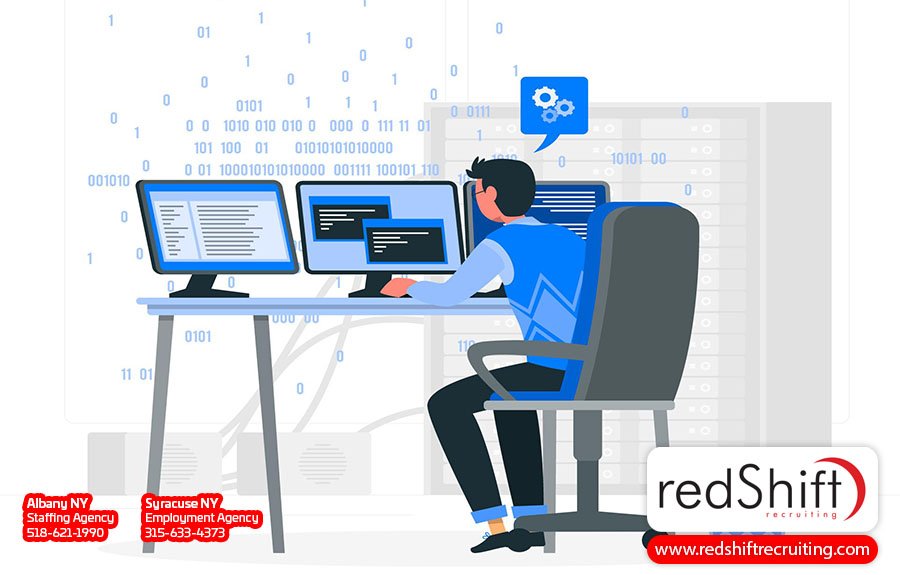Mastering Backend Development: Fundamental Concepts and Terminologies
Think coding websites is all about sleek UIs and elegant interfaces? Think again. Underpinning visually impressive frontends lies backend mastery. While front-end code gives applications their visible form, back-end logic implements functionality, stores data, and drives connectivity behind the scenes. This article will explore the fundamentals of backend development, from APIs and databases to server-side programming, web frameworks, and more. Whether you're exploring software or web development or expanding your skills, this article will help you understand the essentials of back-end development, equipping you to construct powerful software and web applications that enable next-generation digital experiences.
Backend Development Fundamentals
If you want to learn backend development, start by familiarizing yourself with the basics. Back-end development refers to the creation of server-side software architectures that enable web services and database management systems. Using server-side programming languages like Java, Python, PHP, or Ruby, backend developers craft the logic and functionality that powers web applications and other software behind the scenes. These languages, particularly when used in an object-oriented programming approach, allow developers to create modular, reusable code, enhancing the maintainability and scalability of applications.
Frameworks such as Node.js, Django, and Ruby on Rails provide additional tools and libraries to simplify backend development tasks. Application Programming Interfaces (APIs), such as REST or GraphQL, are essential for enabling communication between different software components and external services, such as a weather API that fetches real-time weather data for a travel app.
As a backend developer, you'll be responsible for writing functional programming code that runs on the server side and interacts with databases, web servers, and other components of a website or application.
Understanding the differences between relational databases, managed with SQL (Structured Query Language), and NoSQL databases, which are ideal for handling unstructured data, is critical. Relational databases excel in data integrity and complex query support, while NoSQL databases offer scalability and flexibility for varied data models.
Security and data privacy are paramount in backend development, and implementing robust security measures like encryption, access controls, and secure coding practices is essential to protect sensitive data and maintain user trust. Version control systems, such as Git, are integral to managing code changes and collaborating effectively in development teams. They help in tracking modifications, reverting to previous versions when necessary, and supporting concurrent development efforts. Finally, the field of back-end development is constantly changing, and successful developers must embrace continuous learning practices to keep up with the latest technologies and best practices.
Now that we've briefly reviewed the core concepts of backend development, let's look at some key aspects in more depth.
Understanding APIs
APIs play a crucial role in connecting different components of a web application or mobile app and facilitating seamless communication. A back-end developer's responsibilities include creating libraries and writing code that allow for the efficient transfer of data between the server and the client side. This involves implementing Application Programming Interfaces (APIs) to fetch data from databases or external services and sending it to the front end for user interaction.
Working with APIs goes beyond mere data retrieval and submission. Backend developers use programming languages like Java, Python, or Ruby to handle HTTP requests and responses, a critical aspect of API functionality. Web frameworks, such as Django or Flask, offer tools and structures to streamline API development, enhancing efficiency and maintainability.
Understanding different types of APIs is also key. REST APIs, known for their simplicity and statelessness, are widely used in web services. On the other hand, SOAP APIs are protocol-based, offering a more standardized and secure approach for enterprise-level applications.
A well-designed API is as vital as its functionality. Good API design principles include maintaining consistency in endpoints, proper versioning to manage changes, and ensuring robust security to protect data integrity and privacy. By mastering these aspects, backend developers can ensure APIs are reliable, scalable, and secure, playing a crucial role in the overall success of the web application or mobile app development process.
Database Management
Understanding database management systems like SQL Server is key for backend developers to build systems that not only store data but also organize it in a way that supports the needs of the web application or mobile app. Mastering data architecture requires understanding how relational databases manage complex data relationships in addition to knowledge of tables, columns, and rows and the use of SQL for querying data.
In addition to traditional relational databases, modern back-end development often incorporates NoSQL databases. These databases offer flexibility for handling unstructured data and can be more suitable for certain types of applications, especially when dealing with large volumes of diverse data. Whereas relational databases are widely used in e-commerce applications to manage product information, customer data, and order details, NoSQL databases are often employed in social media applications to handle the vast volume of unstructured data generated by user interactions.
Another vital aspect of database management is the focus on data normalization and data integrity. These practices are essential for maintaining the quality and reliability of data, ensuring databases remain efficient, consistent, and free from redundancy. Additionally, as applications grow, the ability to scale the database efficiently without losing performance is crucial for maintaining a responsive and reliable service.
Server-Side Programming
Back-end development involves crafting code that operates within the server-side of a web application. This encompasses user authentication and authorization, handling HTTP requests and responses, data validation and manipulation, and managing files and data storage. For developers using Java, the Java Virtual Machine (JVM) also plays a crucial role in this domain, enabling Java-based applications to run across different platforms and enhancing portability and efficiency. Utilizing an object-oriented programming language is common in server-side development, allowing for the creation of modular and maintainable code.
Server-side languages like Python, Ruby, PHP, or Node.js are pivotal in building web applications. These languages, often employed as a server-side scripting language, serve as the middle layer in a technology stack, linking the front-end user interface with database technologies. This layer is responsible for crucial processes such as data processing and logic implementation. While Java developers often utilize frameworks like Spring Framework and Hibernate for building robust back-end applications, Python developers commonly use Django or Flask, and Ruby developers favor Ruby on Rails or Sinatra.
Other important aspects of server-side programming include efficient error handling and exceptions, which have the potential to dramatically improve the reliability and stability of web applications, as well as robust security and data protection measures that ensure privacy and safeguard sensitive information.
Web Frameworks
Web frameworks are a vital tool in web and software development, particularly for building dynamic websites and web applications. These frameworks enable back-end developers to write code that can easily handle HTTP (hypertext transfer protocol) requests, interact with databases, and manage sessions. They also simplify various tasks, such as routing URLs and handling authentication processes, and promote code reusability and maintainability, which are essential factors in modern software development. Ultimately, they provide a structured environment for organizing code written on the web server, making the development process more efficient and scalable.
Selecting the appropriate web framework for specific project requirements is crucial, as this choice impacts multiple aspects of back-end development, including performance, scalability, and ease of use. Popular web frameworks like Node.js (Express.js, Hapi.js), Python (Django, Flask), and Ruby (Ruby on Rails, Sinatra) offer a wide range of features to facilitate the back-end web development process. MVC (Model-View-Controller) frameworks offer a clear separation of concerns, promoting organization and maintainability. Meanwhile, RESTful frameworks align with REST API principles, which are ideal for building web services with a focus on simplicity and statelessness.
Additionally, these frameworks bridge the gap between front-end development and backend logic, facilitating collaboration between front-end, back-end, and full stack developers and promoting a more cohesive development process by allowing developers to have a comprehensive understanding of both client-side and server-side aspects.
Performance Optimization and Scalability
Performance optimization and scalability are key considerations in development, particularly when dealing with high user traffic. This can be achieved through a variety of techniques, each addressing different aspects of backend functionality. Caching strategies like in-memory caching and object caching store frequently accessed data in temporary memory to reduce the time it takes to retrieve information, significantly speeding up interactions for both web browsers and mobile apps. Load balancing through algorithms such as round-robin and least-loaded server balancing evenly distributes user traffic across multiple servers, preventing overloads and ensuring stable performance.
Implementing asynchronous processing offloads tasks like file I/O operations and database queries from the main thread, allowing back-end operations to occur independently from frontend development tasks. This ensures smooth user experiences across different devices by enhancing response times and platform compatibility. Meanwhile, database indexing using B-tress or hash indexes improves data retrieval speeds by organizing data for more efficient searching and sorting. Using a content delivery network (CDN) can further improve performance by caching static content such as images and CSS files closer to users, reducing latency, and improving load times.
By incorporating these strategies, backend developers can ensure their applications are capable of handling high user traffic and maintaining optimal performance across different platforms. Regularly monitoring and analyzing HTTP requests and conducting data analysis are essential in identifying potential areas for further optimization, while understanding the importance of capacity planning and resource management is critical for effective scalability. Anticipating and planning for future growth ensures that the backend infrastructure can adapt and scale without compromising performance.
Testing and Debugging
Testing and debugging ensure the functionality and reliability of code. These processes are pivotal in verifying that web pages and applications function correctly across different devices and platforms. Various types of testing target specific aspects of the code. For example, unit testing examines individual components, while integration testing checks how these components work together. Performance testing assesses the responsiveness and stability of the code under different loads. Employing specific methodologies and tools, such as JUnit or Mockito for unit testing and Selenium for integration testing, ensures comprehensive coverage.
Debugging is the next step, in which backend developers identify and rectify any issues uncovered during the testing process. Debugging requires a systematic approach to trace and fix errors in the code, often using specialized tools and techniques. Understanding different programming languages is beneficial, as debugging strategies can vary between languages.
Modern back-end development embraces automated testing and continuous integration (CI) as standard aspects of backend programming. Automation speeds up the testing process and integrates it seamlessly into the development cycle, while CI ensures that new code changes are tested and integrated regularly without disrupting the existing system. Additionally, effective exception handling and error logging are crucial for pinpointing the exact location and cause of problems, effectively streamlining the problem-solving process.
Security Considerations
One of the essential tasks in back-end development is implementing robust security measures to protect against common threats like Cross-Site Scripting (XSS), SQL injection, and Cross-Site Request Forgery (CSRF). Key practices like input validation and sanitization are crucial in preventing such vulnerabilities. For example, input validation helps thwart XSS and SQL injection attacks by checking and cleaning the data entering the system.
Security frameworks and libraries, such as the OWASP Top 10, offer guidelines and tools for mitigating common vulnerabilities, enabling backend developers to build more secure applications from the ground up. Additionally, encryption and access control mechanisms are crucial to protecting sensitive data and user information. Encryption ensures that data remains confidential, while access control governs who can view or modify data, further fortifying the security of backend systems. Addressing these security considerations is not just a technical requirement; it plays a significant role in building trust with users and providing a safe and reliable user experience.
Industry Trends and Advancements
The job description of a back-end web developer requires a commitment to continuous learning to stay up-to-date with the latest industry trends and advancements. One significant trend in backend web development is the adoption of microservices architecture. This approach involves segmenting applications into smaller, independently functioning services, enhancing scalability and flexibility, and facilitating easier maintenance.
Serverless computing is another interesting trend, freeing developers from server management and allowing them to concentrate on writing code. Exploring different serverless computing platforms can offer insights into their diverse use cases and advantages, particularly in terms of cost-efficiency and scalability. Containerization through tools like Docker is also rapidly gaining popularity. This technology enables applications to be encapsulated in portable containers, promoting consistency across different environments and cross-platform compatibility.
Additionally, backend developers should be familiar with cloud computing and Infrastructure as Code (IaC). These technologies facilitate more efficient and scalable infrastructure management, a key component in contemporary server-side development.
Finally, staying up to date with evolving web frameworks like Rails can help back-end developers enhance their skill set and keep up with current industry standards. Staying informed about evolving trends not only demonstrates technical proficiency but can also improve the backend developer salary and help these professionals maintain a competitive edge in the job market.
Frequently Asked Questions
What Are the Common Challenges Faced in Backend Development Projects?
Some common challenges that arise during back-end development projects include difficulty managing large amounts of data efficiently and ensuring the security and privacy of user information. Optimizing performance to handle high levels of traffic can be another challenge, as can integrating different systems or technologies and dealing with complex business logic requirements. Overcoming these challenges requires a strong understanding of backend programming concepts and effective problem-solving skills. Finally, adapting to evolving trends in this rapidly changing field requires a long-term investment in continuous learning.
How Can I Improve the Performance of My Backend Application?
Improving the performance of your backend application starts with optimizing your code by eliminating unnecessary queries and reducing database calls. Use caching techniques like memorization or object caching to store frequently accessed data, and consider scaling horizontally by adding more servers or implementing load balancing to distribute the workload. Finally, regularly monitor and analyze performance metrics to identify bottlenecks and make necessary improvements.
What Are the Best Practices for Database Schema Design?
When implementing database schema design, consider the relationships between your data and structure them accordingly. Normalize your tables to minimize redundancy and improve efficiency. Additionally, choose appropriate data types for each field and optimize indexing for faster queries. Finally, regularly maintain and update your schema as your application evolves.
How Can I Ensure the Security of My Backend Application?
To ensure the security of your backend application, start by implementing strong authentication and authorization measures to control access. Regularly update and patch your software to address any vulnerabilities and encrypt sensitive data, both in transit and at rest. Implement logging and monitoring systems to detect any suspicious activity. Finally, educate yourself and your team about best practices for secure coding and stay updated on the latest security threats.
What Are Some Emerging Trends and Advancements in Backend Development?
Emerging trends and advancements in backend development are constantly evolving. From the rise of serverless architecture to the adoption of microservices, there is a shift towards scalability and flexibility. Additionally, technologies like GraphQL and event-driven architectures are gaining popularity for efficient data processing. Continuous integration and deployment (CI/CD) practices are also becoming standard to ensure faster delivery of updates. As a back-end developer, staying updated with these trends can help you build robust and cutting-edge applications that meet the ever-changing demands of users.
Conclusion
Efficient backend systems serve as the springboards for innovative interfaces and experiences. By mastering the essentials of backend development, aspiring developers gain an expansive toolkit to engineer the foundations of digital products. With techniques for speed, security, and scale, developers gain creative license to build experiences limited only by their vision. Whether you're new to frontend and backend development or a seasoned pro, dedicating time to sharpening your backend skills will empower you to build the seamless experiences users expect and unlock innovation for your business.
Article Author:
Ashley Meyer
Digital Marketing Strategist
Albany, NY

